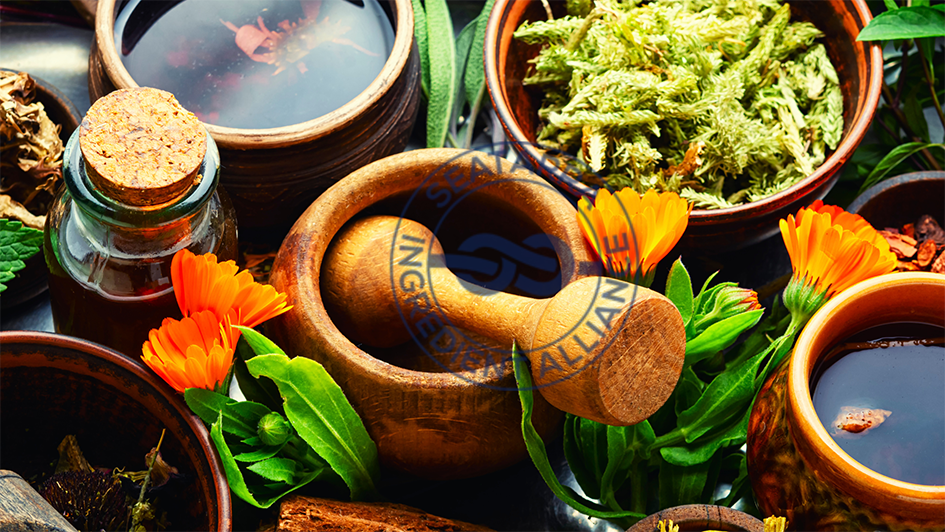
Green Healing: The Comprehensive Guide to Using Herbs for Health and Harmony
In the embrace of nature’s verdant splendor, a gentle yet profound form of healing awaits. Herbs, the earth’s humble offerings, hold within their leaves, flowers, and roots, the power to heal, soothe, and rejuvenate. This guide unfolds the tapestry of green healing, presenting a holistic approach to using herbs for enhancing health and harmony in our lives. Through understanding the symbiotic relationship between humans and plants, we uncover how to harness the therapeutic properties of herbs, creating a life infused with wellness and natural balance.
The Foundations of Herbal Healing
Herbal healing, or phytotherapy, involves the use of plants and their extracts to prevent and treat various health conditions. This ancient practice, deeply rooted in the world’s traditional medicine systems, recognizes herbs as allies in maintaining health and restoring balance. Each herb possesses unique properties and active compounds that interact with the body’s biological systems, offering a natural and holistic approach to healing.
Understanding Herbal Actions
Herbs work through different mechanisms, known as herbal actions, which describe their effects on the body. Familiarizing oneself with these actions is crucial for effectively using herbs for health:
- Adaptogens: Help the body adapt to stress and restore balance.
- Anti-inflammatory: Reduce inflammation and soothe irritation.
- Antimicrobial: Combat bacteria, viruses, and other pathogens.
- Nervines: Support the nervous system, easing anxiety and promoting relaxation.
- Carminatives: Aid digestion and relieve gastrointestinal discomfort.
Creating Your Herbal Wellness Plan
Integrating herbs into your daily routine requires a thoughtful approach, considering your unique health needs and goals. Start by identifying areas you wish to improve, such as stress management, digestive health, or immune support. Then, select herbs known for their efficacy in these areas, ensuring they align with any existing health conditions or medications.
Herbal Remedies for Common Conditions
- Stress and Anxiety: Lavender, Chamomile, and Ashwagandha are renowned for their calming effects.
- Digestive Issues: Peppermint, Ginger, and Fennel offer relief from indigestion and bloating.
- Immune Support: Echinacea, Elderberry, and Astragalus enhance immune function and resilience.
Methods of Herbal Administration
Herbs can be utilized in various forms, each offering different benefits and modes of absorption:
- Teas: A gentle way to consume herbs, perfect for daily wellness routines.
- Tinctures: Concentrated herbal extracts that provide a more potent dose.
- Topical Applications: Salves, oils, and creams for addressing skin conditions and muscle pain.
- Capsules and Powders: Convenient for those preferring not to taste the herb.
Cultivating a Healing Herb Garden
Growing your own medicinal herbs fosters a deeper connection to the healing process and ensures access to fresh, potent botanicals. Start with easy-to-grow herbs like Mint, Basil, and Lemon Balm, considering your climate and space availability. Even a small windowsill garden can provide a wealth of healing herbs.
The Therapeutic Ritual of Gardening
Gardening itself is a form of green healing, offering mental and physical benefits. The act of planting, nurturing, and harvesting herbs encourages mindfulness, physical activity, and a sense of accomplishment.
Integrating Herbs into Lifestyle and Nutrition
Beyond their medicinal use, herbs can enhance daily life through culinary applications and personal care:
- Culinary Uses: Incorporate herbs like Rosemary, Thyme, and Cilantro into meals for added flavor and health benefits.
- Herbal Self-Care: Create herbal baths, facial steams, or tea rinses for hair to incorporate wellness into your self-care routine.
Navigating the Herbal Journey Safely
While herbs offer a natural path to health, it’s important to use them wisely:
- Consultation with Professionals: Before adding new herbs to your regimen, especially if you have existing health conditions or take medications, consult with a healthcare provider or a qualified herbalist.
- Quality and Sourcing: Choose high-quality, organic herbs from reputable sources to ensure purity and potency.
- Education and Research: Continuously educate yourself on herbal medicine, understanding both the benefits and potential risks.
The Path Forward with Green Healing
Embracing green healing opens a world where wellness flows naturally from the earth to our bodies, nurturing us in ways that are gentle, effective, and aligned with the rhythms of nature. As we learn to incorporate herbal wisdom into our lives, we cultivate health, harmony, and a profound connection with the natural world. This journey is not just about healing physically but also about growing spiritually and emotionally, as we rediscover the ancient bonds that link us to the plant kingdom.
Herbs remind us that nature holds the keys to our well-being, offering solutions that are as beautiful as they are effective. In the garden of life, they stand as sentinels of health, guiding us towards a future where living in harmony with nature is not just a choice but a way of being.



